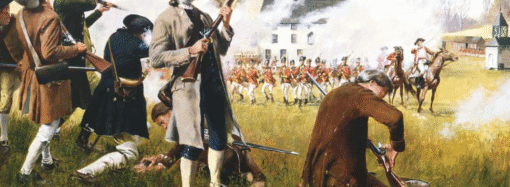Hollywood’s first treatment of the pioneering paleontologist Mary Anning invented an entirely fictious lesbian love story, taking the focus away from her compelling narrative as a self-taught genius forced to operate on the outskirts of British geology due to her gender. As a result, Ammonite may be the least feminist movie that comes out this year.
Known worldwide during her lifetime, Mary Anning contributed perhaps more to our understanding of prehistoric life than any individual aside from Charles Darwin. Among her many discoveries were the first correctly identified ichthyosaur skeleton and two nearly complete plesiosaur skeletons.
Anning became so well known that visitors from across Europe and North America flocked to Anning’s Fossil Depot, as she called her shop. In 1827, geologist George William Featherstonhaugh purchased fossils for what is now the New York Academy of Sciences, while in 1844 King Frederick Augustus II of Saxony made a special stop to add to his personal natural history collection.
Not that you would know any of this by watching the trailer for Ammonite. Those who do can easily be forgiven for thinking nothing more of Anning than that “she sells sea shells by the seashore” while living as a closeted lesbian who favored younger women.
Nothing could be further from the truth.
In Ammonite, Kate Winslet, age 44, plays Anning, while Saorise Ronan, age 26, plays Charlotte Murchison, wife of geologist Sir Roderick Impey Murchison. The Murchisons and Anning were friends in real life, and Charlotte did stay some weeks with Anning. But Charlotte was Anning’s elder by 11 years, and, unlike what the film states, Charlotte was not suffering from “melancholia.” As Shelley Emling explains in The Fossil Hunter: Dinosaurs, Evolution, and the Woman Whose Discoveries Changed the World, Roderick had Charlotte stay so that she might “benefit from the sea air and ‘become a good practical fossilist.’”
Roderick was an accomplished geologist in his own right and Charlotte pushed her husband to succeed, while providing editorial support and geological illustrations for his books. To reduce Charlotte and Mary’s bond to some sordid affair not only besmirches their friendship, but it runs roughshod over the scientific accomplishments of both women.
Discussing Anning, Riley Black at Smithsonian Magazine writes that “no evidence of the paleontologist’s love life… exists at all.” This may be true in the sense of relationships, but Emling’s book quotes a letter by Anning in which she describes Sir Roderick Murchison as “certainly the handsomest piece of flesh and blood I ever saw.” Certainly, there lies no small clue as to which team Anning played for.
Black’s analysis of Anning’s life and Ammonite’s plot (to which she is in fact favorably disposed) also makes no mention of the ample evidence of Anning as a deeply pious woman. Anning’s family were English Dissenters, a term encompassing many small denominations outside the Church of England. Emling specifically names Anning’s family as “Independents,” Congregationalists in today’s parlance. She also writes that members of the Anning family regularly attended the Independent Chapel on Coombe Street:
“Despite their meager means, Mary and her mother had always been respectable parishioners and regular contributors to the church’s finances. As a child, Mary had found comfort in the words of her pastor, who would have reflected the Dissenters’ belief in a sympathetic and benevolent God, one that cherished each person’s individuality.”
Her family’s religious beliefs further ostracized Anning from the British geological community of the day, which was almost exclusively Anglican. However later in life, “after surely giving the issue great consideration,” Anning joined the Church of England.
Anning was no 19th century Neil deGrasse Tyson. As Emling notes, Anning’s amazing discoveries in the fossil record never dampened her belief in God.
“Mary was deeply pious and—like Darwin—she most likely was unsettled by what she was unearthing. … Always, though, she maintained a belief in God’s omnipotence.”
With her faith so strong that even her discoveries could not shake it, it is unlikely that Anning would have deviated from the Church of England’s position regarding homosexuality. While the Anglican Communion has been debating the issue since the 1990s, we must remember that this 30-year-old debate started happening more than 140 years after Anning’s death. Indeed, for all denominations of Anning’s time the issue would have been next to unthinkable.
Rather than examining Anning’s real life and career, including continually being locked out of the all-male geological societies of 19th century Britain, director Francis Lee decided to impose his own political and moral preferences upon a long dead, pious woman with no means to defend herself.
Furthermore, the sex scenes, which Winslet and Ronan choreographed themselves, achieve an R rating which puts a barrier between Anning’s inspirational story and any young girls interested in STEM careers generally or paleontology more specifically. Hollywood claims to build up women and empower girls, but the introduction of a purely fictional lesbian affair into the real story of “the greatest fossil hunter ever known” seems to do the exact opposite. Why sexually objectify Mary Anning and Charlotte Murchison when you can show us the stunning intellectual accomplishments of these women?
In her evaluation for Smithsonian, Black labeled Ammonite as historical fan fiction. There is no propriety in imposing 21st century morals upon a 19th century woman who almost certainly would have been appalled at such a depiction. “Fans” of Anning should also be appalled that her true story is covered up by the director’s own moral-political fiction agenda.
Anning came from next to nothing, was self-taught, and did more for the field of paleontology than anyone else. She read everything she could get her hands on regarding fossils, going so far as to hand copy borrowed publications, including illustrations, so that she might retain a copy for reference. Her gritty, back-breaking profession was fraught with peril. Christopher McGowan writes of the cliffs Anning hunted fossils on that:
“The dry marl is hard and firm as rock, but when it rains water cascades like mountain streams, transforming it into a soft and glutinous mass. This makes the cliff prone to slump, especially during the winter months. Cliff falls occur without warning, making Black Ven a particularly hazardous place to collect fossils. Anning herself narrowly escaped death during one such fall, but her dog, Tray, was not so lucky, and was buried alive.”
Despite all of this, her gender saw her rejected by 19th century scientific organizations, with the men she sold the fossils to publishing papers based on her exhausting physical labor. More than capable of outstripping their understanding of the anatomy and geology of her specimens, the only piece of her scientific writing which saw publication in her lifetime was an extract from a letter to The Magazine of Natural History in which she corrected an erroneous claim published earlier that the prehistoric shark Hybodus was a member of a new genus.
Ammonite sacrifices Mary Anning’s own compelling tale on the altar of the LGBTQ movement of the moment. In doing so, it does an immense disservice to Anning’s memory and women and girls everywhere.
The words Anning once wrote to a young girl in London are even more readily applied to Lee, Winslet, Ronan, and the rest of their grave-robbing Hollywood brethren.
“I beg your pardon for distrusting your friendship. The world has used me so unkindly, I fear it has made me suspicious of everyone.”
—
Image Credit:
YouTube-” Ammonite – Official Trailer “
















Leave a Comment
Your email address will not be published. Required fields are marked with *